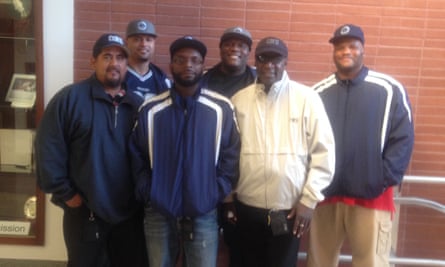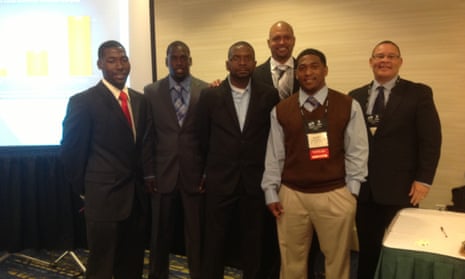California advocates who have long worked to keep young men safe from gun violence are adapting their activities to deal with another pressing public health emergency that’s disproportionately killing black Americans: Covid-19.
Before the coronavirus outbreak, staff at the Office of Neighborhood Safety in the San Francisco Bay area city of Richmond worked with young men who were at risk of being caught up in the cycles of gun violence that have long rocked the community. The six outreach workers in the team counseled them, connected them with services, and intervened in local conflicts – all in an effort to prevent shootings and stop retaliatory gunfire.
Richmond has seen at least 15 shooting incidents since the start of the stay-at-home orders that followed the coronavirus outbreak, including the first murder of the year and a triple shooting at a barbecue. Although the rate of gun violence in the city has steadily declined over the years, ONS staff says that the recent uptick coupled with new limits on in-person contact with the 37 fellows they work with is a tough adjustment.
“Most of our strategy is based on human interaction,” said Sam Vaughn, program manager for ONS. “We need access and to be able to hug our youngsters and tell them that we’re there, we need to be with them.”
“One of our young people’s friends was shot and to only be able to talk to him through FaceTime was difficult,” said James Houston, lead neighborhood change agent for ONS. “It was good to be able to engage him, but for me, showing love is the most important part of our job,” he continued.
The staff said the stay-at-home orders have made it more difficult for some of the fellows in the program to avoid conflict. Before the stay-at-home orders went into effect, many of the young men who knew they were in danger of being targeted could keep themselves safe by staying with friends or family in different cities. Or they could blend into street and highway traffic to avoid being caught off guard by a rival. Now, that’s not an option.
“All of a sudden they’re in the same place for a month, that news is gonna get out,” said Vaughn. “It’s not about getting lucky and seeing someone, it’s just about waiting long enough.”
Now, instead of the usual hugs, handshakes and daps, Vaughn and Houston are waiting in line at Costco early in the morning to buy groceries that staff will drop off to ONS fellows. Neighborhood change agents do about 12 grocery deliveries a week and will continue to do so until supplies run out or Richmond’s shelter-in-place order – which is set to expire on 31 May – is lifted.

Houston and Vaughn say that some of the young men they interact with still believe they are too young and healthy to become severely ill if they contract Covid-19.
“Some of the young still feel like they’re more susceptible to being shot and killed than catching the virus and dying,” said Vaughn.
But many people in their communities are at high risk of complications when contracting Covid-19. Black Californians account for just 6% of the state’s population but make up almost 12% of its total Covid-19 related deaths, according to the most recent state data, a discrepancy that stems from decades of systemic failings and medical discrimination.
So, in addition to their regular violence prevention work and delivering food and supplies, Houston and Vaughn are relaying the seriousness of Covid-19 to the people they interact with.
“It’s been great to deliver food to our young people and their families and tell them, ‘Stay inside, you don’t have to go out for anything’,” said Houston. “We’re doing all we can so they can just ride this out.”
“The number one focus is to make sure folks have the needs in their homes met so they don’t feel desperate and do something drastic,” echoed Vaughn.
ONS staff and other violence interrupters in a handful of California cities are recognized as an essential part of city operations. Even with this recognition Vaughn finds himself “hustling” to get the necessary protective equipment – like masks and gloves – for himself and the rest of the staff. The supplies they do have are mostly donations from local residents and gun violence reduction groups such as Moms Demand Action.
“We’re piecemealing it together and using all of our networks to make sure we have all the basics, cause it’s a lot of exposure,” said Vaughn.
Vaughn adds that he sees the pandemic to be an “equalizer” of sorts. He argues that many Americans are now getting a glimpse into some of the hardships faced by many in underserved communities – especially the locales that have been stricken by gun violence for decades.
He continued: “All the things people are feeling and dealing with now is what young people in urban America have been dealing with forever: questions of mortality, not having basic needs, feeling all alone.”
